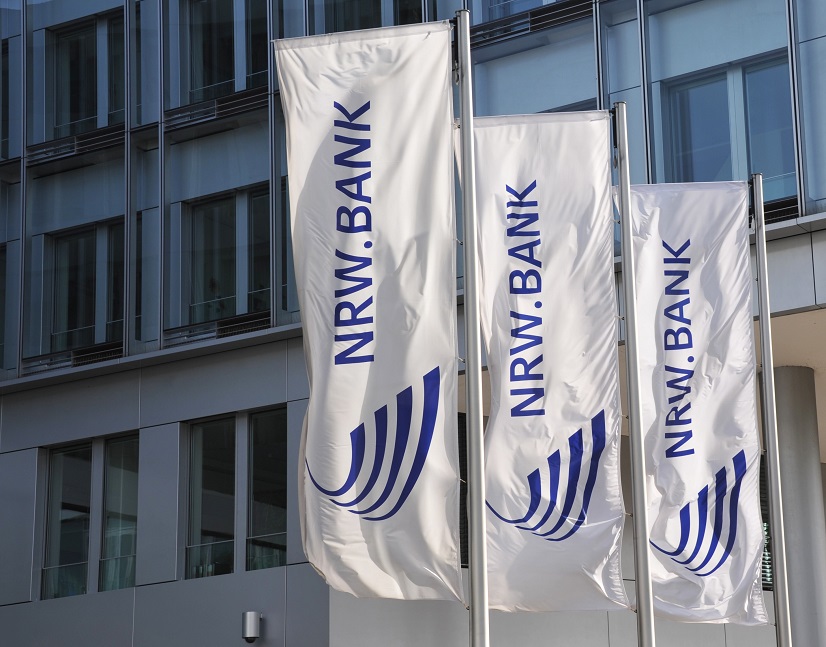
SSAs ride the global market rapids
With uncertainty in global funding conditions almost certain to persist, some of the most prominent issuers in the Kangaroo and Kauri markets talk to KangaNews about their programmes and what comes next – including the ever-growing role of sustainable finance.
MARKET ACCESS
Rich How have supranational, sovereign and agency (SSA) issuers revised their funding approaches in response to market challenges?
GOEBEL The expectation of moderately higher funding cost once the European Central Bank finished its net purchases under the asset-purchase programme initially drove our 2022 funding strategy. Hence, we had a quick start to the year and built up pre-funding.
Following the Russian attack on Ukraine, Bund swap spreads widened massively due to a flight to quality – allowing us to issue in euros at very attractive spreads to our guarantor and still achieve better funding spreads versus Euribor.
As a consequence, the euro has taken a disproportionately high share of this year’s funding – more than 70 per cent in the year to date. Still, we aim to keep a certain balance in our funding programme and maintain a presence in other important funding markets.
AINSLEY The first months of the year provided conducive market conditions across the board and allowed us to be active in 12 different currencies. Since the start of the Russian invasion of Ukraine market volatility has settled on a higher level, which reduced the degree of diversification in our funding activities.
At the same time, we witnessed a flight to quality combined with more attractive yields in the euro market. We increased the euro share of our issuance, including a euro green bond that attracted unprecedented demand. Having raised more than 60 per cent of our 2022 target already, we are in a very comfortable situation for the remainder of the year.
GRASA As in previous years, European Investment Bank [EIB] started the year on a strong footing – accessing several markets in the first two weeks with overwhelming interest from a variety of investors in different geographies. By the end of January, the bank completed more than a third of its €45 billion (US$48.3 billion) annual funding programme and it had issued in 12 different currencies.
Issuance continued afterwards in markets where conditions were optimal. By the end of May, the bank had completed two-thirds of its funding programme – similar to previous years.
BILL International Finance Corporation [IFC]’s funding year starts in July and ends on 30 June. We were able to markets more than sufficiently during the first half of the fiscal year.
In fact, our funding in Australian and New Zealand dollars was so well advanced that we decided not to participate in the primary markets in January, though we have been selectively re-opening lines on the back of reverse enquiries. We are very comfortable from a liquidity standpoint and will likely only come back to the markets in the new fiscal year – with hopes for more geopolitical stability.
IFC as a credit has been treated as a flight-to-quality asset during less conducive conditions, which has allowed us market access.
HELLERUP We have basically not changed anything in our funding strategy. What we have seen – mainly due to volatility in swap markets – is that some markets will work very well as the basis has changed. This accounts for some Asian currencies, but the higher yield has also helped in some structured markets.
BEUER Like the outbreak of COVID-19, the major developments of 2022 have not had a major impact on our funding strategy. We are responsible for the area of North Rhine-Westphalia, for which some of our existing loan programmes were slightly adjusted to cover help for refugees from Ukraine for our municipalities. However, we started 2022 with a target of €11-13 billion equivalent and this has not changed.
MORGAN We have not made any changes to our funding strategy despite the volatility we have seen over the past few months. In general, as market sentiment can change quite dramatically from one day to the next, it means being flexible in our funding approach and having access to multiple markets is very important.
RECINE Recent market volatility has affected our funding strategy. Scheduling public transactions with months of anticipation is just not as viable as before. This has led us to monitor our main markets continuously, looking for the best windows of opportunity.
We also have given significant importance to the use of private placements and tapping new markets. New markets – such as Mexico – have allowed us to issue when others were not open for primary issuance.
RUSCHPLER Asian Development Bank [ADB] maintained a nimble approach in accessing issuance windows to implement its funding programme. Strategic efforts to issue liquid lines in key markets – notably sterling and US, Australian, New Zealand and Canadian dollars – have broadened and deepened distribution of ADB’s paper, facilitating access during volatile periods.
ADB continues to diversify its funding programme across markets. It has issued in 13 currencies with around 60 transactions so far in 2022. We have been proactive in responding to demand for environmental, social and governance (ESG) instruments, and have issued a historically high volume of ESG bonds across currencies – notably in green and gender but also in other themes such as blue, health and education.
ADB continues to expand its counterparty relationships as it issues more frequently in non-US dollar markets, such as Canadian dollars. This enables wider coverage and provision of differentiated funding opportunities.
“Following the Russian attack on Ukraine, Bund swap spreads widened massively due to a flight to quality – allowing us to issue in euros at very attractive spreads and still achieve better funding spreads versus Euribor. As a consequence, euros have taken a disproportionately high share of this year’s funding.”
SUSTAINABILITY EVOLUTION
Rich The sustainability bond market continues to evolve. How has investor feedback contributed to change in SSAs’ programmes?
ROSOLOWSKA Over the past few years we have seen investors’ understanding of ESG issues mature and their engagement intensify. This has translated into a greater interest in green, social and sustainability (GSS) products – notably EIB’s Climate Awareness Bonds (CABs) and Sustainability Awareness Bonds (SABs). The proceeds of these bonds are earmarked for activities contributing to climate, environmental and social sustainability.
As a result, the share of CABs and SABs in EIB’s funding has been increasing, accounting for 60 per cent of our Kangaroo presence last year. Likewise in New Zealand it was ESG interest that allowed us to return to the Kauri market after a three-year hiatus with an inaugural New Zealand dollar CAB.
While CABs remain our flagship product, SABs have been increasingly attracting investor attention. In January this year we launched the first public bookbuilt Kangaroo SAB and the A$1.5 billion (US$1.1 billion) issue turned out to be the largest GSS Kangaroo in the SSA sector to date.
What we often hear from investors is that they appreciate liquidity in GSS bonds. On EIB’s side, we either endeavour to launch large benchmarks in key maturities or we strive to grow lines over time, often in the more challenging tenors.
MORGAN Kommunalbanken Norway [KBN] was a fairly early mover in the ESG space, starting green lending in 2010 and issuing its first public green bond back in 2013. Investor focus and engagement have moved a long way since then, and particularly quickly since we issued our first Australian dollar green bond back in 2018.
KBN released the third iteration of its green-bond framework in 2021 and we have received very positive investor feedback. Transparency of reporting has always been of the highest importance at KBN, and going forward investor focus on transparency will continue to shape and drive sustainability programmes.
HELLERUP Nordic Investment Bank [NIB] has been issuing its environmental bonds since 2011 and is among the leading issuers of green bonds in the Nordic area. When speaking with investors in Australia and New Zealand, there is now much more focus on ESG issues – this is discussed in every meeting. All investors focus on NIB’s sustainability credentials as an issuer while some are also interested in the NIB environmental bond programme.
It is clear investors would like to see NIB issuing environmental bonds in Australian and New Zealand dollars. We would like to issue in these currencies. However, we are limited by the number of eligible assets that can be financed.
Even through NIB has a mandate to finance environmental projects, we have a strict selection process in our NIB Environmental Bond Framework. We will only choose the most dark green projects for our environmental bonds. In [northern hemisphere] autumn, we will explore in which currencies we will issue environmental bonds.
GOEBEL Rentenbank’s Green Bond Framework is well accepted among investors. They appreciate our focus on renewable energy as well as the clear and transparent impact reporting. There is also a growing interest in theme bonds relating to other aspects of our promotional mandate – namely biodiversity, animal welfare and the social aspect of our financing activities. We will look into these topics but it will be more difficult to calculate a tangible impact for these activities.
BEUER We have a long history of ESG funding. We started issuing green bonds in euros in 2013 and social bonds in 2020. Last year, we were able to issue two social bond lines in the Australian dollar market, with five- and 10-year tenors.
In the five-year line, a lot of new domestic asset managers with ESG portfolios invested in the NRW.BANK name. We would not have been able to attract them to our orderbooks if it were a regular bond. Setting up the social bond programme was really important to us. We expect our next deal in the Kangaroo market to be in the same format, because investors are increasingly focusing on the ESG format of assets.
RUSCHPLER We continue to see strong interest from market participants across jurisdictions for ADB’s theme bonds. Our transactions raise awareness across a number of our key initiatives and enrich the overall ESG supply available.
Our issuance activities have resulted in a number of interesting discussions between investors and ADB’s sector specialists, who have been able to shed more light on the operations supporting our theme bonds.
BILL IFC has issued two social bonds in Australia and was the first SSA issuer of a green bond in New Zealand. On the back of recent conversations with the investor and dealer community, it is clear to us that this area is experiencing a rapid development in the Kangaroo and Kauri markets, and we are keen to support it.
Thematic bonds are, however, in very high demand across the regions we operate in and one can truly speak about demand competition for this format of financing.
RECINE We created our green-bond programme in 2018 and our social-bond programme in 2020, at the start of the COVID-19 pandemic. Investor feedback during the roadshows for the inaugural deals from these programmes was very important as it helped shape and improve the frameworks.
The current feedback we receive is mostly regarding our impact reports and if new eligible project categories are being considered. We continue to have open dialogue with investors regarding these reports in order to improve them. This information is of the upmost importance for investors.
Rich With an increasing investor focus on whole-issuer sustainability credentials, do issuers believe there is a horizon for use-of-proceeds (UOP) programmes?
RECINE There is no doubt that issuer ESG ratings will become more relevant in future, as more and more investors increase their mandates for sustainability investments as well as using them for positive screening of investable assets. Investors that do not have sufficient in-house resources will rely on ESG analysis and reports to help them make investment decisions.
Nonetheless, in my opinion, UOP programmes will continue to be relevant as these instruments provide valuable information to investors about their allocations through their impact reports.
In the case of supranationals, loan portfolios have a natural fit with their UOP programmes. With regard to our UOP programme, we are currently analysing an increase to the scope of our social-bond programme to incorporate more eligible project categories.
ROSOLOWSKA The additionality of UOP bonds such as CABs and SABs lies in the fact that they shed light on activities earmarked for allocations in a reliable and verifiable manner. By reporting on these activities – in EIB’s case our own lending – issuers offer an extra layer of transparency and engage in the clarification of what may be considered green or sustainable on their balance sheet and under what conditions.
Clarifying the status quo helps markets assess an issuer’s course of action over time, based on criteria that are becoming increasingly comparable within the regulatory frameworks under development. We believe this to be key for the re-orientation of capital flows to support the transition of the global economy.
CABs and SABs thus remain an integral part of EIB’s institutional approach to sustainability. Last year, they accounted for a record 21 per cent of our overall borrowing and the share is growing further this year.
This has been supported by strong uptake of eligible green lending – as assessed through the lens of the EU taxonomy regulation. This regulation called for a progressive reclassification of green borrowing activities based on a single set of core eligibility criteria.
In parallel, EIB is applying the same logic to social lending activities. In this spirit, the bank recently launched an inaugural climate awareness EARN [euro area reference note]. Sized at €4 billion, it is the bank’s largest CAB to date and comes almost exactly on the 15th anniversary of the first-ever green bond issued by EIB.
BEUER As a European issuer, we feel a UOP programme will become standard practice if it is already not the case. We have the EU taxonomy in place so issuers and investors can measure the eligible assets behind issuance. This should make investor decisions easier in future as they are able to compare like-for-like pools of assets.
HELLERUP It is correct that over the last few years investors have focused increasingly on issuers’ sustainability credentials and not only on an issuer’s GSS bond framework. However, some investors need dedicated impact and do not want to finance a balance sheet.
For this reason, I believe there will be ongoing demand for UOP bonds. The various taxonomies also underline the importance of a UOP bond. For example, with the EU taxonomy issuers will finance activities that fulfil certain objectives. Regulation will require that some investors buy bonds that are aligned with the EU taxonomy. This will contribute to demand for UOP as well.
BILL We are not moving away from labelled bonds and are in fact considering labelling our entire programme in addition to our existing green and social products. The rationale is that IFC as an entity is sustainable, so we aim to brand accordingly while focusing on transparency.
Rich ADB has a framework for green bonds but no framework for theme bonds – health, education and gender. Have investors questioned the lack of a framework for the theme bonds?
RUSCHPLER ADB’s theme bonds for sustainable development have been well received by the investor community in the various markets we have issued in. While we regularly convey the message that everything ADB ultimately finances is sustainable and linked to the SDGs [UN Sustainable Development Goals], it is likely that interest in UOP bonds will continue as some funds explicitly require a label to invest.
“We have not made any changes to our funding strategy despite the volatility we have seen over the past few months. In general, as market sentiment can change quite dramatically from one day to the next, it means being flexible in our funding approach and having access to multiple markets is very important.”
AUSTRALASIAN SPECIFICS
Rich How does Kangaroo issuance fit into SSAs’ funding strategies for the remainder of 2022?
HELLERUP By issuing Kangaroos and Kauris we achieve real diversification – the investors in Australia and New Zealand do not buy our US dollar or sterling paper, nor green bonds issued in euros.
GRASA EIB chooses to be a multicurrency issuer for prudency and diversification, and the Australian dollar market is one of the most important. It was the bank’s fourth-biggest funding market in 2021 and is the third so far in 2022.
At the beginning of this year, EIB issued its largest transaction in Australian dollars: a new five-year SAB, totalling A$1.5 billion.
For the remainder of the year, the bank will continue to monitor the market in order to access it if conditions are favourable and there is demand for EIB bonds.
AINSLEY We are very glad to have added three new Kangaroo bonds in different parts of the curve this year. This bodes well for increases in the months to come, once we see volatility calming. The Australian dollar market has been an important complement of our funding strategy for a number of years and I am optimistic that 2022 will be no different.
Rich How has demand for Australian dollars changed over the course of 2022?
RUSCHPLER Historically, we have seen a good mix of offshore and domestic support for our Australian dollar primary offerings. However, the past few months have been punctuated by waves of selling out of Japan on the back of a weakening yen. This has left the street feeling somewhat heavy.
However, inventory has been reasonably well recycled in the secondary market, seemingly mostly by international real-money accounts. Given where valuations are currently – not just on an outright yield basis but also versus Australian Commonwealth government bonds and semis – going forward we are hopeful of seeing a decent bid for Australian dollar issuance from both domestic and international investors.
AINSLEY Even if demand for our Kangaroo bonds is still dominated by the international community, we have seen a much stronger bid from domestic investors in 2022 so far. Much higher yield and elevated spreads to semi-governments should attract international and domestic demand.
GRASA Historically, support for EIB’s deals came predominantly from offshore. But the bank has been pleasantly surprised by the increase in onshore investor participation in transactions labelled as CABs or SABs.
GOEBEL The Kangaroo market has seen good issuing volumes so far this year and we have issued two deals to date. Recently, there has been currency-related selling from Japanese investors but we expect spreads to stabilise at current levels and offer attractive relative value to semis.
Our funding activities will be focused on maturities with seven-to-10-year tenor until year end. At current spreads, Kangaroo issuance swapped back to Euribor looks attractive but investor demand has to pick up to get deals done. As the major Australian banks will have to raise a higher share of their funding offshore than under QE, the basis should remain supportive for further Kangaroo issuance.
BEUER Euros is our home currency and we also view US dollars as a strategic market. Sterling and Australian dollars are more semi-strategic diversification plays. We concentrated on issuing our euro green bond earlier this year and have also issued in sterling. We hope to issue off our Kangaroo programme soon if the opportunity arises.
BILL We aim to maintain diversification of funding sources as well as build up curves in the major currencies. We view Australian and New Zealand dollars as such.
The cross-currency basis has been quite favourable versus US dollars for most of our fiscal year even in the environment of relatively limited offshore funding needs of the local banks. We expect the local banks’ offshore needs to increase, which should drive the cross-currency basis swap wider, all other things being equal.
At the same time, the absolute interest-rate differential between Australia and the US Federal Reserve’s rate is likely to invert further, which might have a negative impact for absolute-yield-driven offshore investors in Australian and New Zealand dollars. Currency expectations will be important here.
When it comes to supply, it is only natural for participants to take a breather in an environment of rapidly rising yield, widening credit spreads and lack of clarity on interest-rate increases. Markets need some time to recalibrate and re-price to find a proper footing.
Rich ADB and KBN have found good issuance opportunities in the Kauri market this year. What do the prospects look like for the rest of 2022?
MORGAN The last couple of years have been very successful for KBN in the Kauri market and we have already been active this year. We highly value the investor diversification we get in the Kauri market and consistently monitor it for opportunities.
It has been very quiet in the market since the initial issuance at the start of the year, but hopefully ADB’s recent successful trade will spur a bit more activity in the weeks and months ahead. Our maturity preference and strategy in the Kauri market is similar to our preference in the Kangaroo market, so we are hoping we are not done for 2022 just yet.
RUSCHPLER Similar to the Kangaroo market, the Kauri market remains a strategic part of ADB’s overall funding programme. Subject to investor demand and after-swap funding levels, we are open to further New Zealand dollar issuance this year.
Rich At what point on the curve is further issuance most likely in the Kangaroo and Kauri markets?
HELLERUP For NIB, the best fit is 3-5 years. This is because we need to swap everything back to euros and, in the derivatives stress test, the liquidity requirement for potential collateral outflow is higher the longer the cross-currency basis swap is. Speaking with investors in Australia and New Zealand, it seems there will be most demand in the 3-5 year segment, and at five years in the Kauri market – so this fits well with our preference.
BILL I think we might see limited long-dated SSA supply in the near future. From IFC’s perspective, with our programme being well termed out, we expect to be most active around the belly of the curve. However, we will continue to support liquidity at the longer end of the Australian dollar curve as well.
MORGAN We have already issued new five- and 10-year Kangaroo deals this year. Throughout the course of the year we will look for opportunities to add size and liquidity to these lines. In addition, if we see opportunities in our other outstanding bonds in this part of the curve we can look at continuing to add liquidity to these lines too.
While the shorter end of the curve is not our main focus for 2022, if an opportunity arises we could potentially look at a three-year deal or a tap of our green bond issued in 2021.
RECINE We have been doing some private placements in Australian dollars and these have been mostly in the long part of the curve – 10-year and onwards.

WOMEN IN CAPITAL MARKETS Yearbook 2023
KangaNews's annual yearbook amplifying female voices in the Australian capital market.

SSA Yearbook 2023
The annual guide to the world's most significant supranational, sovereign and agency sector issuers.












